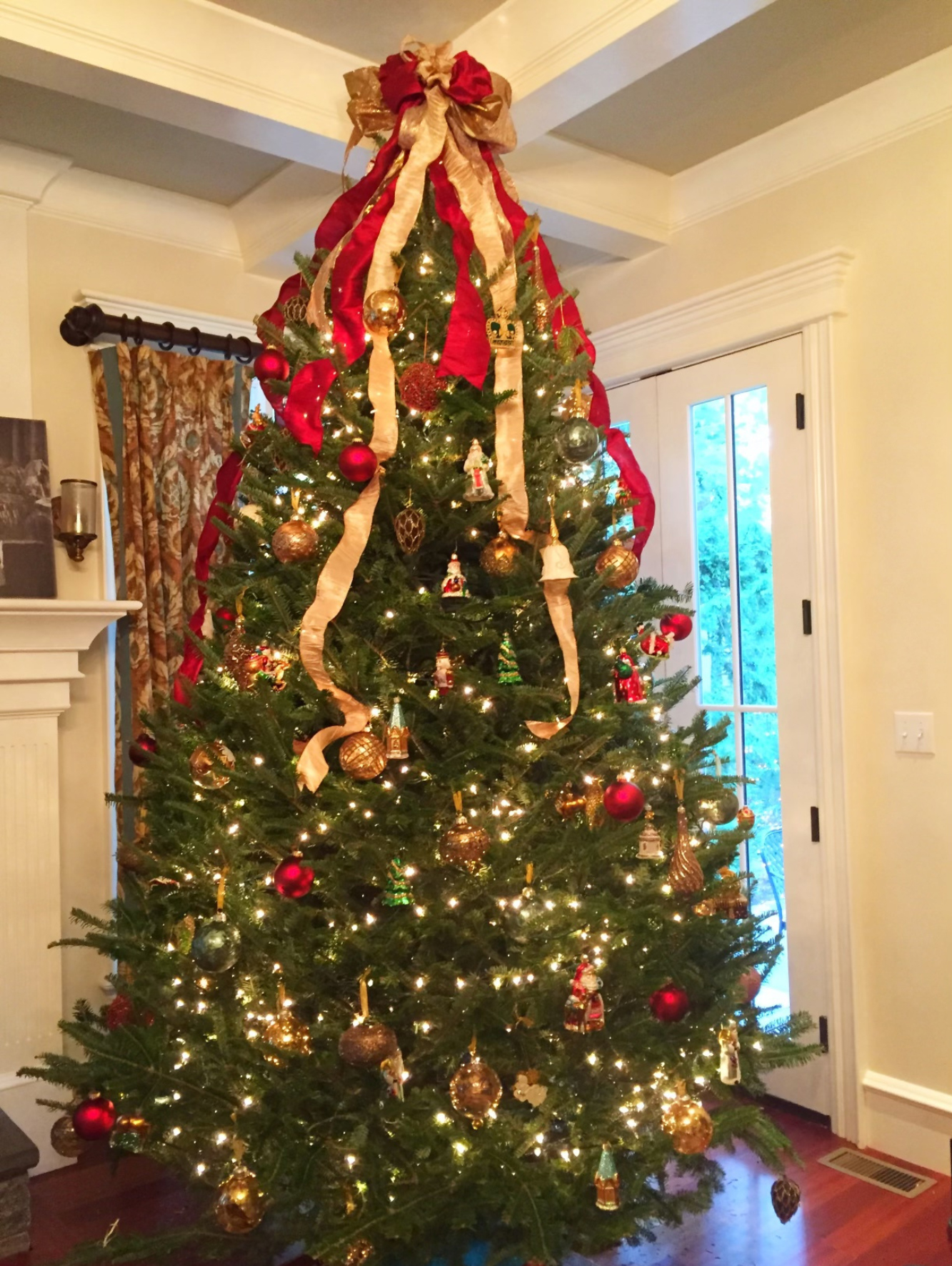By Trevor Smith
“There’s a light on this tree that won’t light on one side.”
How the Grinch Stole Christmas
Ahh, the Christmas tree.
It is the center of so many people’s Christmas memories. When I was growing up, we would put on the Grinch Who Stole Christmas on vinyl and listen to that while decorating. We had a collection of ornaments collected through the years, and my aunt gave us new ones every year.
My mom would tell us the same stories about certain ornaments every year, and my sister and I would roll our eyes. We had small colored lights and tinsel up until we got a cat. I remember coming down Christmas morning, the tree shining like a beacon of joy and love in what seemed to my young self to be a sea of presents. My paternal grandparents lived in a Victorian house.
The center of the house was open to the third floor, with a balcony that wrapped around the second floor leading to all the rooms. Theirs was a 14ft tree that required going to the second-floor balcony to put the star on top. They had old antique ornaments and old big bulb lights with reflectors that just made sense on that huge tree.
Christmas is my favorite holiday and the winter holiday season is my favorite time of year. I love the tradition, the closeness we all feel to each other, and the lights. As a professional, I have decorated and lit hundreds of trees. Bright over the top trees for banks and businesses, porch trees, and private trees some for so many years the families are a part of my holiday tradition and I theirs.

I have had the honor of decorating the 18ft Blue Room tree in the White House and even wire-framed tropical palm trees.
The buzz from holiday shoppers in the garden center has been about the first snow and people love-hate relationship with lighting their Christmas tree. Lighting trees has become easier over the years, especially since LED’s have come to market. The “one goes out, they all go out” of Christmas lights past is not an issue anymore, and many marriages and holidays are better for it; however, it still seems to be a stressor.
Let me share with you two tips and techniques I have learned over the years that will deliver all the joy and sparkle while taking the uncertainty out of tree lighting.
As with everything these days, there are millions of tips on how to light a tree. The first question is, How Many Lights Do I Need?
The rule of thumb is 100 lights per verticle foot, so a 6ft tree would require 600 lights. This will give you a traditional gentle sparkling tree, which is excellent for balsam trees, small trees, and sparsely decorated trees. For a sparkling tree, 200 lights per verticle foot are the formula to use, and this is great for dense trees like Frasier firs or trees with a lot of ornaments.
This is also good for porch trees or any outdoor tree. 250 to 300 is the count for commercial store windows or extra-large trees. This heavy lighting is not obnoxious, but it’s a lot.
If you are all about lights, then this is your range.
The next step is hanging the lights. The two techniques I use are Triangular 1/3, 1/3,1/3, and Inside Out. For both methods, you will want to plug the lights in and apply the lights while lit. For the triangular technique, divide your tree into thirds. Starting at the top (leaving some slack in the cord), place the last bulb in the string at the top of the tree.
Then weave the strand back and forth across that 1/3 of the tree, attaching new strings of lights as needed until you reach the bottom. It is best to connect no more than 300 lights per run. Then repeat for the other 2/3 of the tree. This is a quick method easy to put on and take off.
For the Inside Out method, start with your first strand at the bottom and work your way around the tree maypole style, beginning with the inside near the trunk. This method adds depth to the tree. Work your way to the top and then back down. Remember to keep your runs to 300 lights or 3 strands. Once the interior is lit, start your next run and work your way along the outer portion of the branches and back down. For each pass, rise the strand 6-8 inches, working your way up. This method is more time-consuming both in the application and in removal, but as mentioned, it adds depth to the tree.
Once your tree is lit, step back and squint your eyes. Look for any holes or dark areas and adjust accordingly, filling them in. Step back again, squint, and once you are satisfied, it’s time to decorate.
When decorating, I use a similar technique to the Inside Out method and place plain balls or nondescript ornaments, both matte and shiny, on the interior. The special ornaments I place on the outer branches. I put detailed ornaments and reflective ornaments near one of the bulbs to highlight the detail or scatter the light.
Remember to keep your tree watered. I would love to see your trees; please share them on social or send me a pic direct at trevors@westonnurseries.com. Take time to enjoy the season.
Happy Holidays Everyone!
Trevor Smith is Weston Nurseries’ Design and Education Manager. We are so proud to have him bring his 20 years of field experience as a regenerative landscape designer to Weston Nurseries.
Trevor holds several landscape certifications, including MCH, NOFA AOLCP, LEED GA, and IPCI, and he is also a past President of the Ecological Landscape Alliance and a current Trustee.
Prior to joining Weston Nurseries, Trevor helped decorate the White House’s East Colonnade and Blue Room for Christmas in 2015 and again in 2016! He described the experience as “overwhelming and ultimately satisfying” all at the same time.
Trevor volunteered his services to the designers who coordinate all the holiday decorations, submitted samples of his work and was selected from thousands of applicants. After undergoing an extensive background check, Trevor traveled to DC where he spent a couple of days working in the White House’s storage facility where all the decorations were stored, gathering the items needed to fulfill the year’s design theme. He and the other volunteer decorators then spent several days in the White House where Trevor and his team decorated the Blue Room and the Colonnade. There results are spectacular!
Here is a short video of his work.
Trevor At The White House








